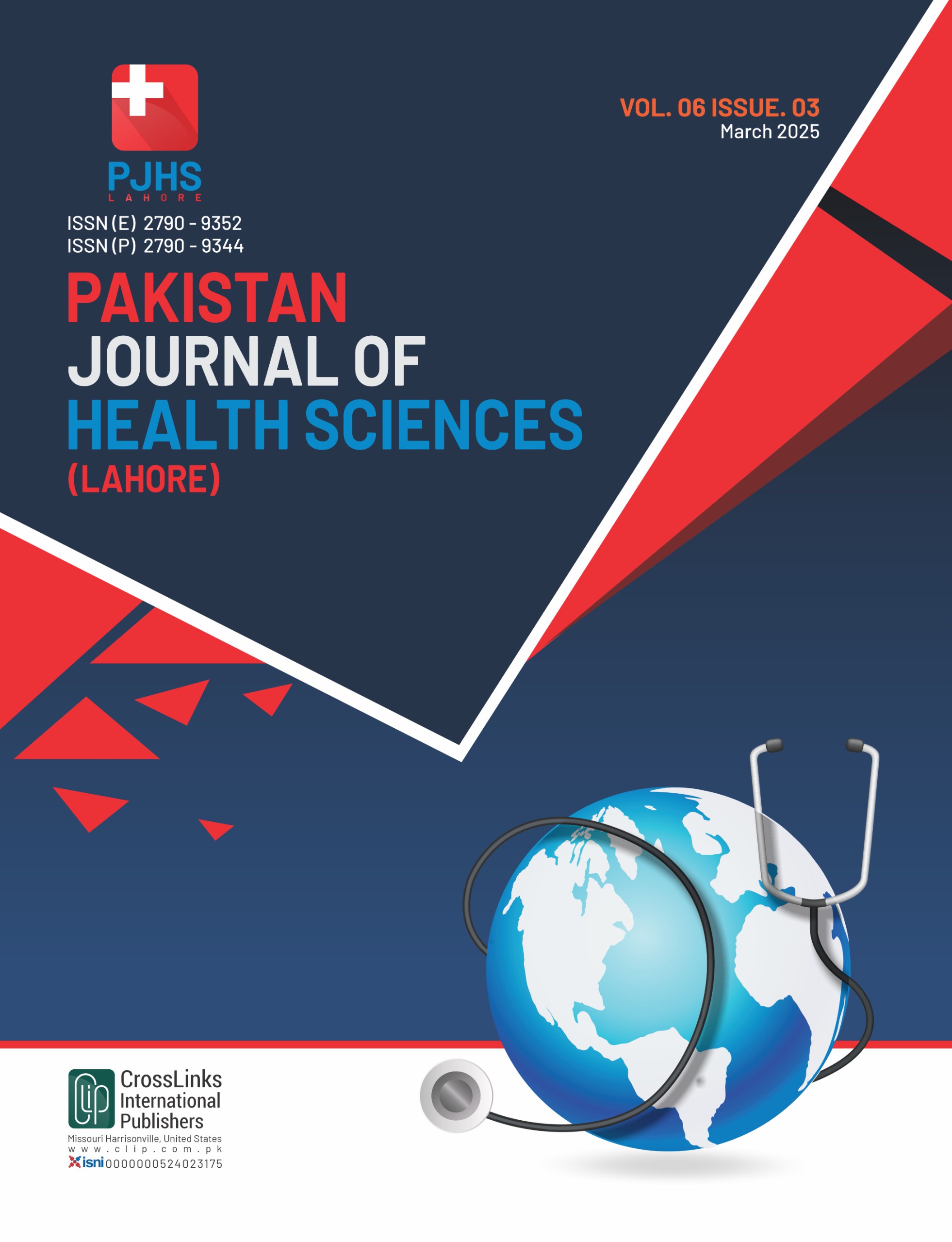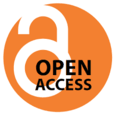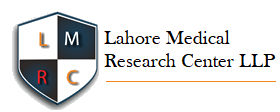Incidence and Causes of Early Hospital Readmissions after Cardiac Surgery. One Year Experience at Tertiary Care Hospital, Multan
Early Hospital Readmissions after Cardiac Surgery
DOI:
https://doi.org/10.54393/pjhs.v6i3.2662Keywords:
Cardiac Surgery, Hospital Readmission, Anticoagulation Management, Postoperative Complications, Infection Control PracticesAbstract
The increased costs, morbidity, and mortality associated with readmissions after cardiac surgery pose a substantial issue for the healthcare system. Objective: To observe the incidence, causes, and outcome of hospital readmissions within two months of discharge after cardiac surgery. Methods: An observational descriptive cohort study was conducted at Chaudhary Pervaiz Elahi Institute of Cardiology, Multan, Pakistan. From September 2023 to August 2024, 1406 patients undergoing cardiac surgery were observed for readmission in the hospital within two months after discharge. Patients who were operated at other facility and those who admitted after 2month were excluded from the study. Perioperative data, reasons for readmission, and outcomes were recorded and analyzed using SPSS version 25.0. Descriptive statistics were applied to continuous and categorical variables. Results: The incidence rate of readmission was 7.5% (n=106). 85.8% readmissions occurred within 30 days after discharge. Common causes of readmission were anticoagulation-related issues (23.6%), wound infections (21.7%), pleural effusion (15.1%), pericardial effusion (9.4%), and sternal dehiscence (6.6%). Surgical intervention was required in 35.8% of readmitted patients. The mean length of readmission hospital stay was 4 ± 2.80 days. Mortality in readmitted patients was 4.7% (n=5). Conclusions: Nearly every 13th patient needs hospital readmission. Early hospital readmission is most common in patients who needs anticoagulation after valve replacement surgery. Early readmission after cardiac surgery, adversely impacts patient outcomes. Improved anticoagulation management, infection control, and postoperative diuretics, are critical for reducing incidence of hospital readmission
References
Iribarne A, Chang H, Alexander JH, Gillinov AM, Moquete E, Puskas JD et al. Readmissions after cardiac surgery: experience of the National Institutes of Health/Canadian Institutes of Health research cardiothoracic surgical trials network. The Annals of Thoracic Surgery. 2014 Oct; 98(4): 1274-80. doi: 10.1016/j.athoracsur.2014.06.059. DOI: https://doi.org/10.1016/j.athoracsur.2014.06.059
Kosmidou I, Shahim B, Dressler O, Redfors B, Morice MC, Puskas JD et al. Incidence, predictors, and impact of hospital readmission after revascularization for left main coronary disease. Journal of the American College of Cardiology. 2024 Mar; 83(11): 1073-81. doi: 10.1016/j.jacc.2024.01.012. DOI: https://doi.org/10.1016/j.jacc.2024.01.012
Murray F, Allen M, Clark CM, Daly CJ, Jacobs DM. Socio-demographic and-economic factors associated with 30-day readmission for conditions targeted by the hospital readmissions reduction program: a population-based study. BioMed Central Public Health. 2021 Dec; 21: 1-3. doi: 10.1186/s12889-021-11987-z. DOI: https://doi.org/10.1186/s12889-021-11987-z
Liang S, Liu Y, Zhang B, Li Y, Guo H, Shi Y et al. A comparison of frozen elephant trunk, aortic balloon occlusion, and hybrid repair for total arch replacement. InSeminars in Thoracic and Cardiovascular Surgery 2021 Sep; 33(3): 667-675. doi: 10.1053/j.semtcvs.2020.11.020. DOI: https://doi.org/10.1053/j.semtcvs.2020.11.020
Scott B, Tam CW, Moon RS. Transfemoral transcatheter aortic valve replacement in a patient with heparin-induced thrombocytopenia: intraoperative anticoagulation management with bivalirudin (Angiomax). Journal of Cardiothoracic and Vascular Anesthesia. 2015 Dec; 29(6): 1603-5. doi: 10.1053/j.jvca.2014.10.018. DOI: https://doi.org/10.1053/j.jvca.2014.10.018
Al-Dorzi HM and Arabi YM. Quality indicators in adult critical care medicine. Global Journal on Quality and Safety in Healthcare. 2024 May; 7(2): 75-84. doi: 10.36401/JQSH-23-30. DOI: https://doi.org/10.36401/JQSH-23-30
Emadi F, Dabliz R, Moles R, Carter S, Chen J, Grover C et al. Medication-focused telehealth interventions to reduce the hospital readmission rate: a systematic review. Journal of Pharmaceutical Policy and Practice. 2025 Dec; 18(1): 2457411. doi: 10.1080/20523211.2025.2457411. DOI: https://doi.org/10.1080/20523211.2025.2457411
Circi R, Boysan E, Behlul Altunkeser B, Aygul N, Cagli K, Cagli K et al. David's procedure for pulmonary artery aneurysm. Journal of Cardiac Surgery. 2020 Apr; 35(4): 942-5. doi: 10.1111/jocs.14480. DOI: https://doi.org/10.1111/jocs.14480
Clarke NS, Sengupta A, Miller A, Jessen ME, Murthy RA. Aspergillus aortitis & aortic valve endocarditis after coronary surgery. Journal of Cardiac Surgery. 2019 Sep; 34(9): 871-4. doi: 10.1111/jocs.14125. DOI: https://doi.org/10.1111/jocs.14125
World Medical Association. World Medical Association Declaration of Helsinki: ethical principles for medical research involving human subjects. Journal of the American Medical Association. 2013 Nov; 310(20): 2191-4. doi: 10.1001/jama.2013.281053. DOI: https://doi.org/10.1001/jama.2013.281053
Soliman MF, Mohamed MA, Mostafa MM, Almasry MA. Predictors of Postoperative 30 Days Unplanned Readmission among Patients Undergoing Cardiac surgeries. Assiut Scientific Nursing Journal. 2024 Sep; 12(46): 33-42. doi: 10.21608/asnj.2024.306452.1864. DOI: https://doi.org/10.21608/asnj.2024.306452.1864
Denktas AE, Anderson HV, McCarthy J, Smalling RW. Total ischemic time: the correct focus of attention for optimal ST-segment elevation myocardial infarction care. Journal of the American College of Cardiology: Cardiovascular Interventions. 2011 Jun; 4(6): 599-604. doi: 10.1016/j.jcin.2011.02.012. DOI: https://doi.org/10.1016/j.jcin.2011.02.012
Simpson MT, Kachel M, Neely RC, Erwin WC, Yasin A, Patel A et al. Rheumatic heart disease in the developing world. Structural Heart. 2023 Nov; 7(6): 100219. doi: 10.1016/j.shj.2023.100219. DOI: https://doi.org/10.1016/j.shj.2023.100219
Mendis S, Puska P, Norrving BE. Global atlas on cardiovascular disease prevention and control. 2011.
Brown CS, Montgomery JR, Neiman PU, Wakam GK, Tsai TC, Dimick JB et al. Assessment of potentially preventable hospital readmissions after major surgery and association with public vs private health insurance and comorbidities. Journal of the American Medical Association Network Open. 2021 Apr; 4(4): e215503-. doi: 10.1001/jamanetworkopen.2021.5503. DOI: https://doi.org/10.1001/jamanetworkopen.2021.5503
Hall BL and Namazie-Kummer S. Potentially preventable readmissions after surgery. Journal of the American Medical Association Network Open. 2021 Apr; 4(4): e216389-. doi: 10.1001/jamanetworkopen.2021.6389. DOI: https://doi.org/10.1001/jamanetworkopen.2021.6389
Sher-i-Murtaza M, Chaudhary MH, Paras I, Manan AA. Efficacy of Posterior Pericardiotomy to Prevent Postoperative Pericardial Effusion after Valvular Heart Surgery. InMedical Forum Monthly 2021 Jun; 32(6).
Cram P, Wachter RM, Landon BE. Readmission reduction as a hospital quality measure: time to move on to more pressing concerns?. Journal of the American Medical Association. 2022 Oct; 328(16): 1589-90. doi: 10.1001/jama.2022.18305. DOI: https://doi.org/10.1001/jama.2022.18305
Facchinetti G, D'Angelo D, Piredda M, Petitti T, Matarese M, Oliveti A et al. Continuity of care interventions for preventing hospital readmission of older people with chronic diseases: A meta-analysis. International Journal of Nursing Studies. 2020 Jan; 101: 103396. doi: 10.1016/j.ijnurstu.2019.103396. DOI: https://doi.org/10.1016/j.ijnurstu.2019.103396
Bianco V, Kilic A, Aranda-Michel E, Gleason TG, Habertheuer A, Wang Y et al. Thirty-day hospital readmissions following cardiac surgery are associated with mortality and subsequent readmission. InSeminars in Thoracic and Cardiovascular Surgery 2021 Dec; 33(4): 1027-1034. doi: 10.1053/j.semtcvs.2020.12.015. DOI: https://doi.org/10.1053/j.semtcvs.2020.12.015
Downloads
Published
How to Cite
Issue
Section
License
Copyright (c) 2025 Pakistan Journal of Health Sciences

This work is licensed under a Creative Commons Attribution 4.0 International License.
This is an open-access journal and all the published articles / items are distributed under the terms of the Creative Commons Attribution License, which permits unrestricted use, distribution, and reproduction in any medium, provided the original author and source are credited. For comments













